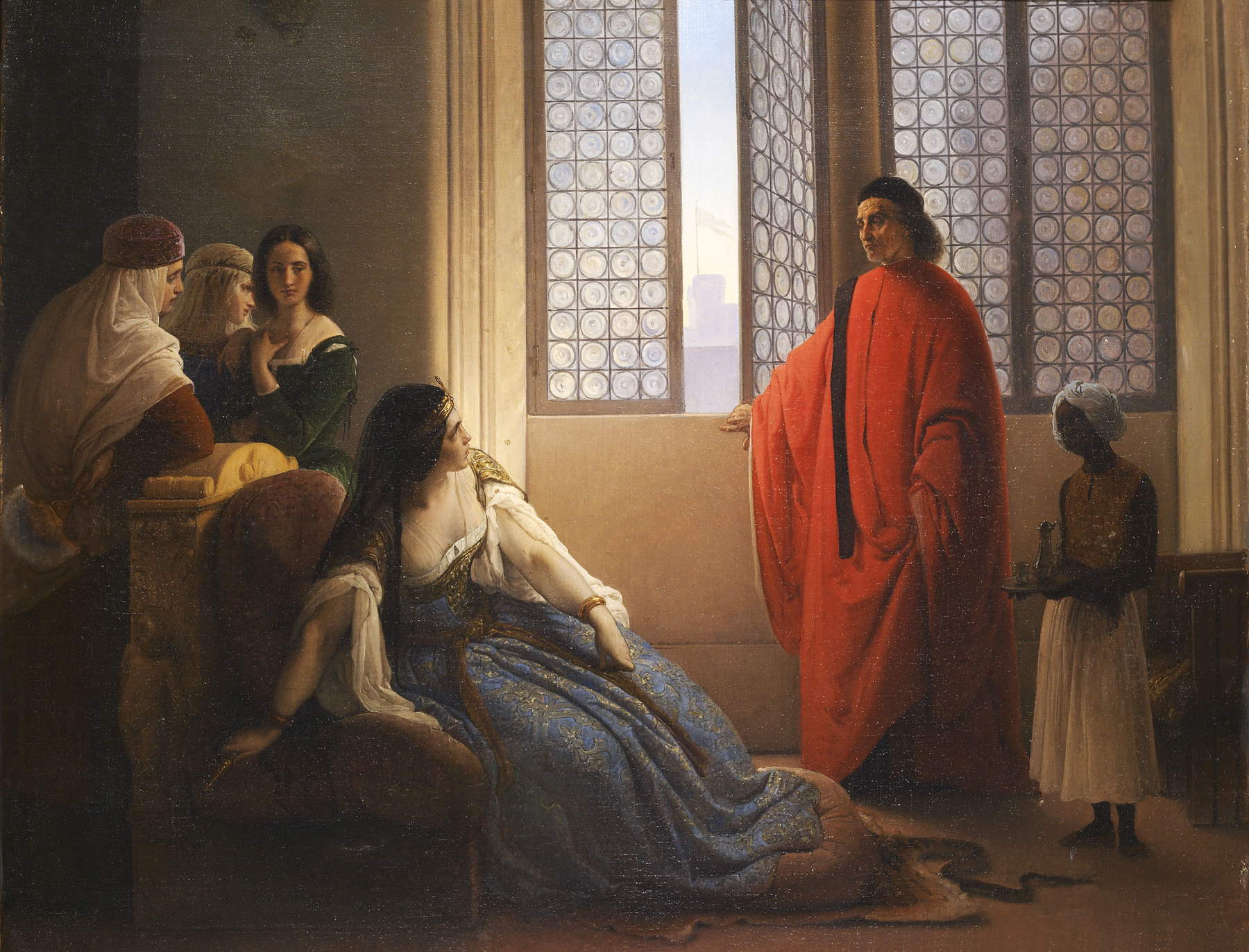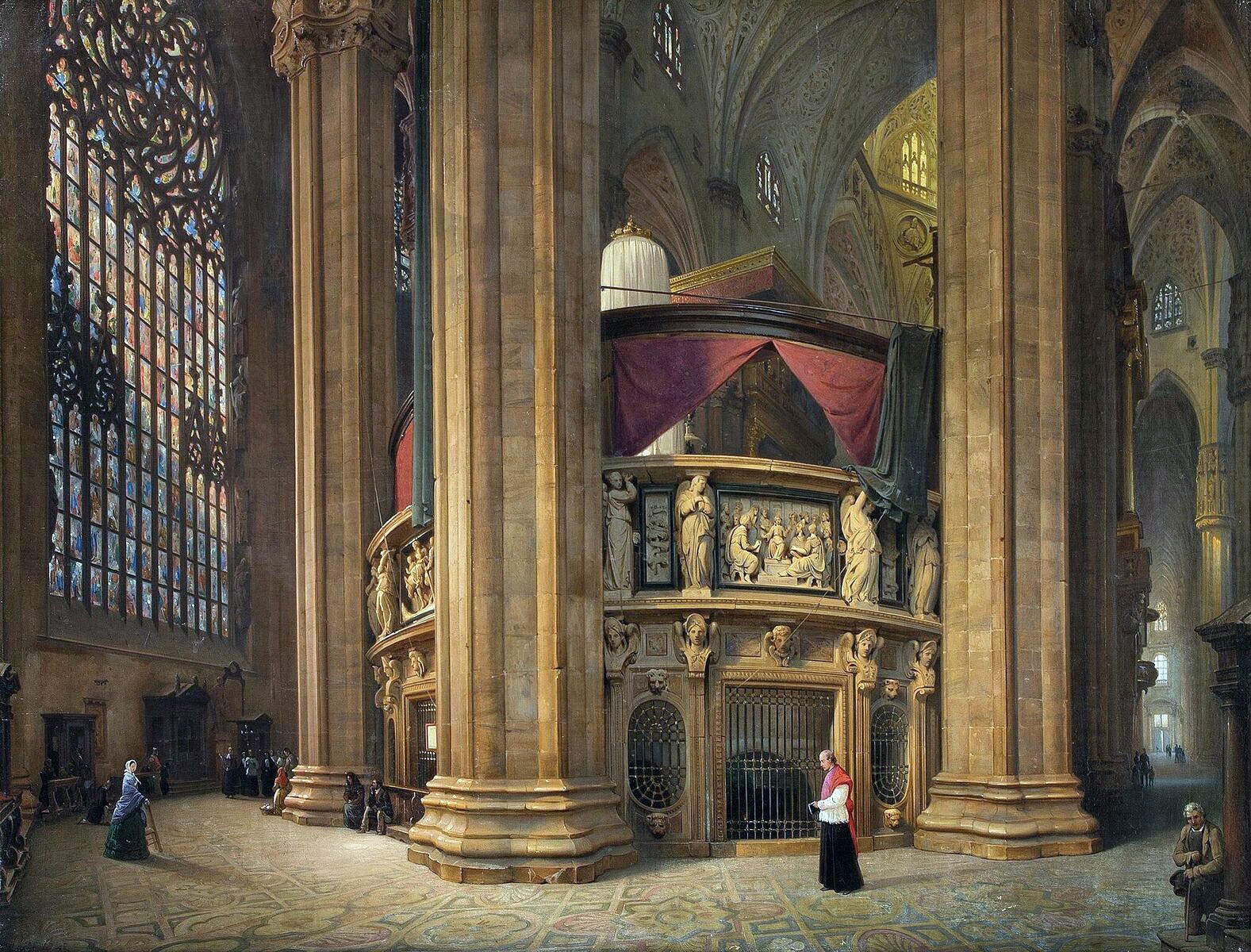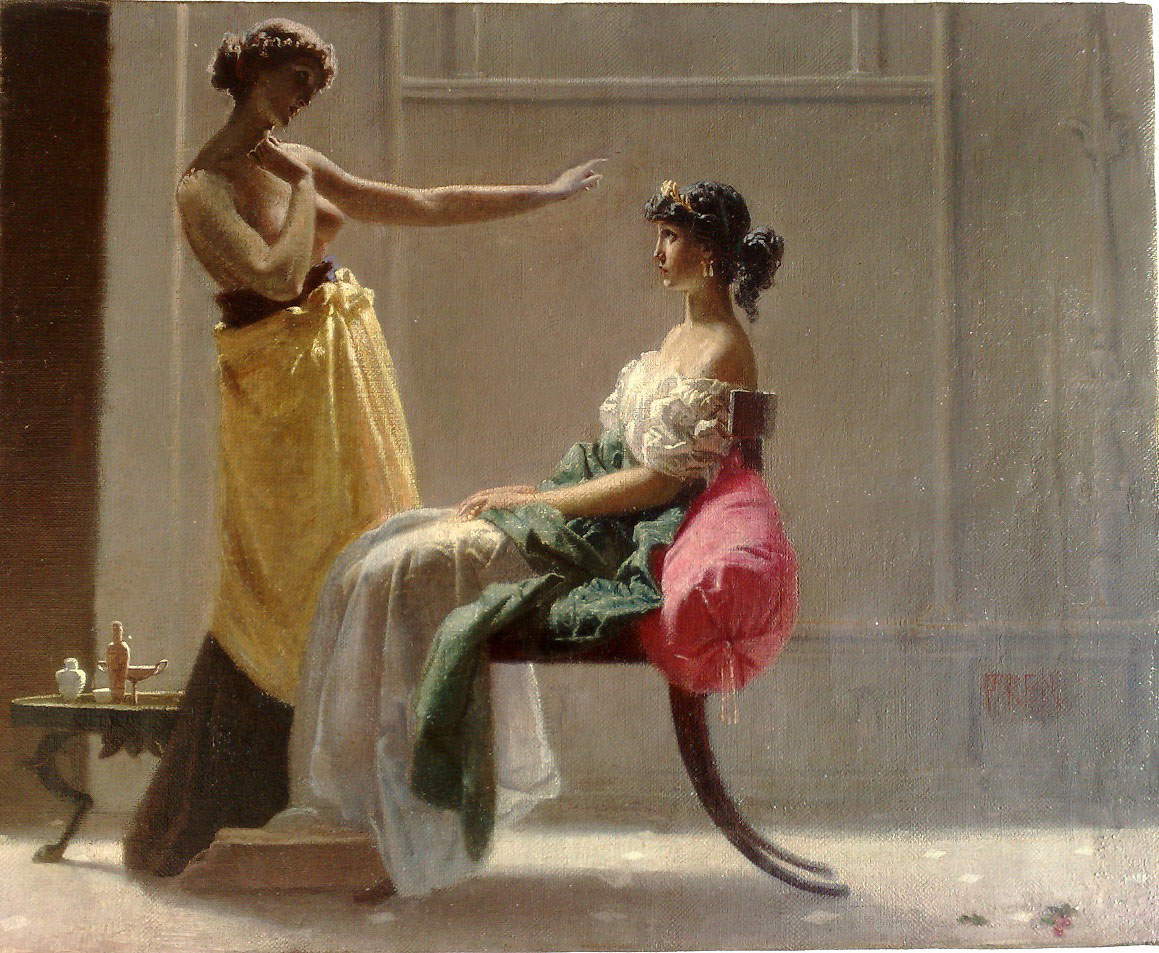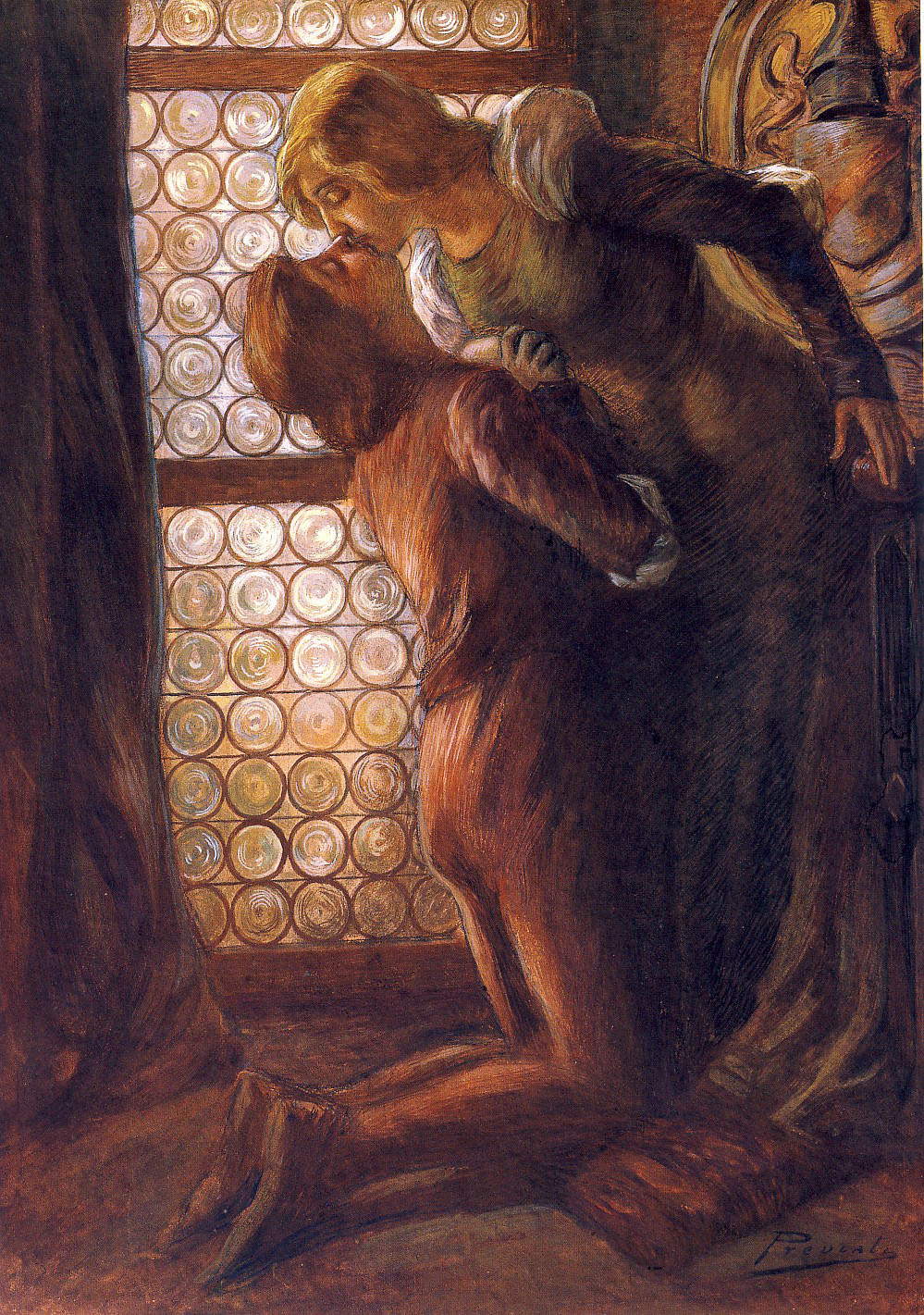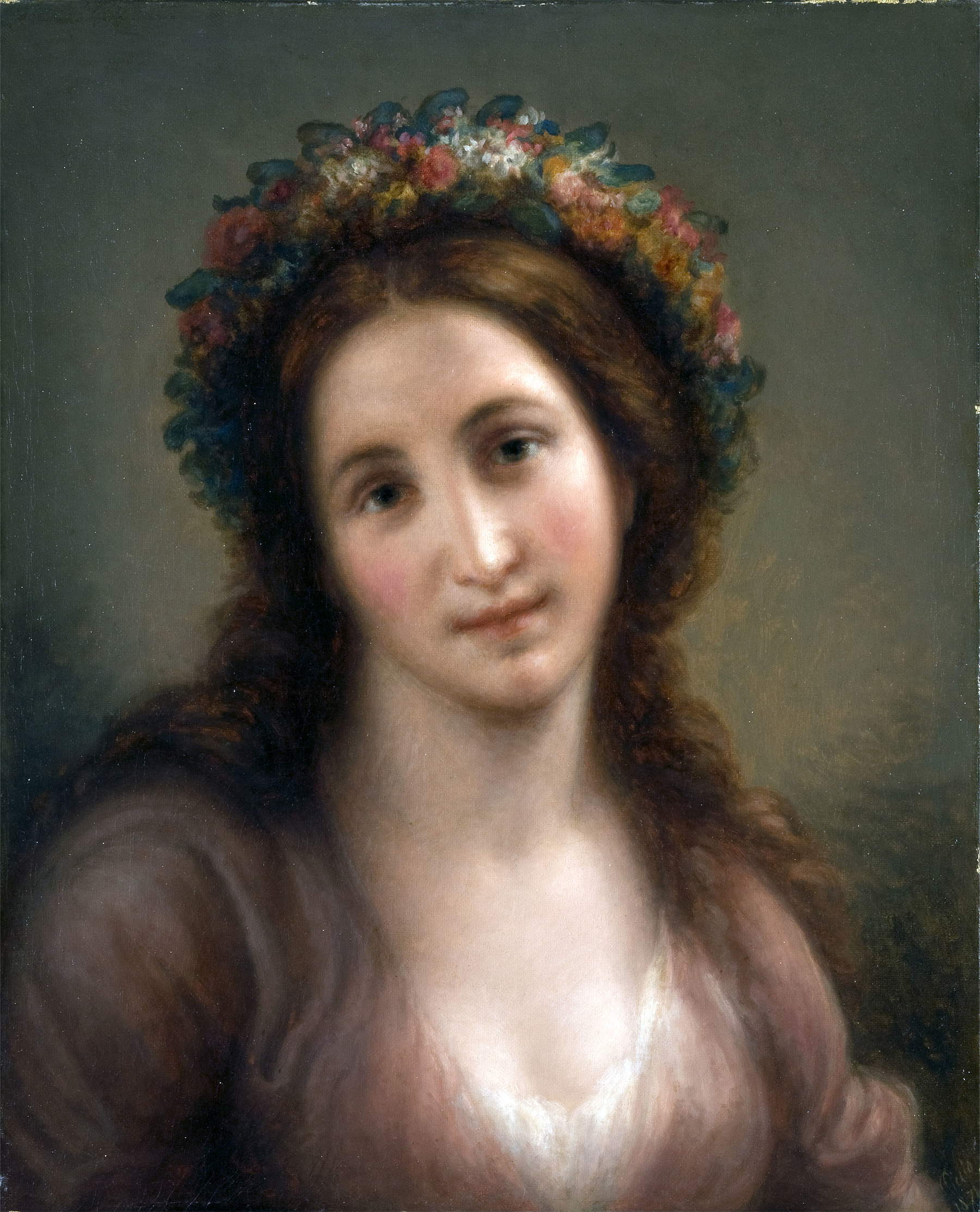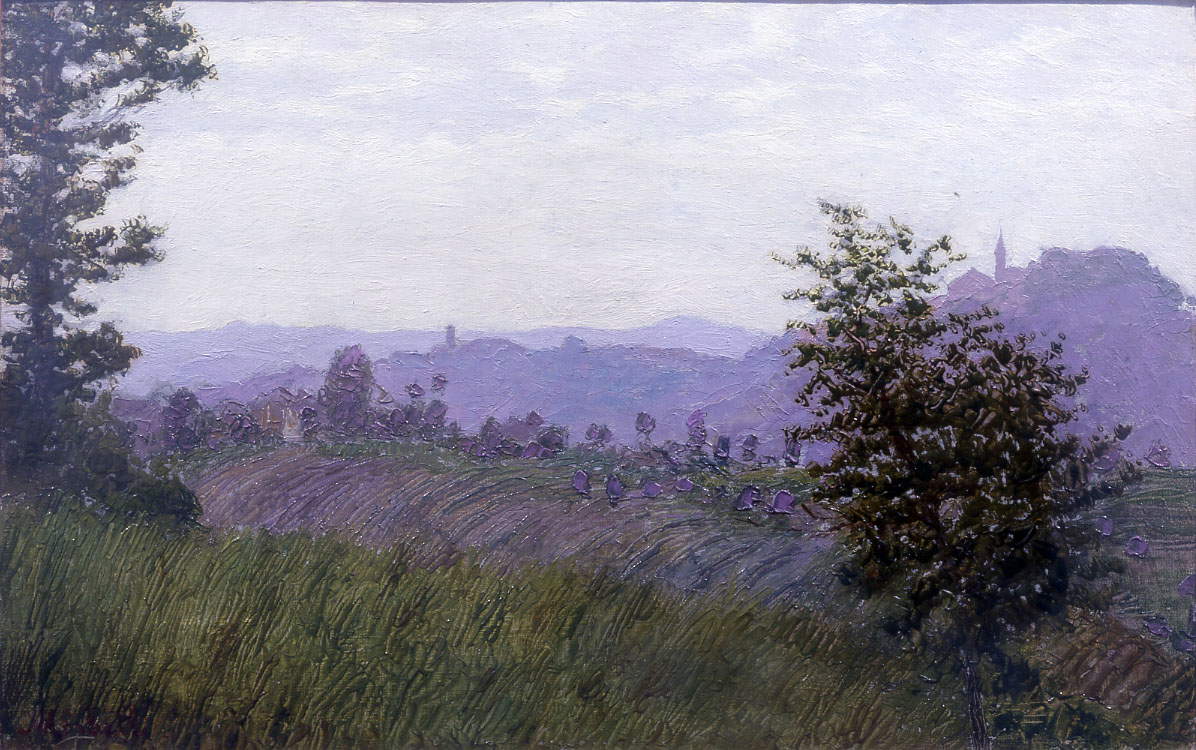by Redazione , published on 13/10/2018
Categories: Exhibitions
/ Disclaimer
At the Palazzo delle Paure in Lecco, the exhibition 'L'Ottocento lombardo' with paintings by Hayez, Segantini, Previati and others is scheduled from October 20, 2018 to January 20, 2019.
Nineteenth-century Lombardy is the protagonist of an exhibition, entitled L’ Ottocento lombardo (Lombardy’s Nineteenth Century), scheduled at the Palazzo delle Paure in Lecco from October 20, 2018 to January 20, 2019: it is a journey through the culture of nineteenth-century Lombardy with more than fifty works by some of the greatest artists of the time, such as Francesco Hayez, Giovanni Segantini, Medardo Rosso, Tranquillo Cremona, Domenico Induno, Giovanni Carnovali known as Riccio, Federico Faruffini and many others.
Curated by Simona Bartolena, the exhibition, beginning with the Romantic season and passing through the Risorgimento experiences and the Scapigliate rebellions, arrives at the social commitment of the turn-of-the-century generations and Divisionist research. The aim of the exhibition is to bring to the attention of a wide audience the art scene of 19th-century Lombardy, which, with the exception of a few big names, continues to be little known. The exhibition is organized by thematic areas and analyzes both movements and iconographic trends, as well as the biography and personality of individual artists, following a narrative thread that aims to shed light on a subject that is not always so well known. The exhibition offers the opportunity to discover a dynamic and surprising universe, artistically and intellectually highly refined and experimental, and to investigate the Italian society of the time. The exhibition, while referring mainly to the pivotal scene in Milan (and in particular that of the Brera Academy), also investigates the situation in the other Lombard provinces and the more peripheral and provincial areas.
The beginning delves into the season of Romanticism, in which the figure of Francesco Hayez, master and model for entire generations of painters, excelled. His long presence in the role of professor at Brera left a profound mark on Milan’s cultural direction: along with Hayez, the works of some painters who took lessons from him for their own path and those of masters contemporary to him, such as Massimo d’Azeglio and Giuseppe Molteni, will be exhibited. A separate section will be devoted to the vedutists and “perspective painters” of the first half of the century (from Migliara to Canella to Bisi), with their city views that tell the story of the Milan of the time, in scenes of daily life that also offer a valuable glimpse of the urban planning and society of the time. The itinerary then moves on to the period of the wars of independence, with works devoted to the themes of the Risorgimento, understood both as a celebration of the protagonists and as an intimate, everyday tale. Particular attention will be given to the research of Gerolamo and Domenico Induno, great interpreters of the Risorgimento theme but also known for their genre scenes, which narrate the lives of the less affluent classes, masterfully interpreting a pictorial model that later had wide fortune.
The visionary and unique personality of Giovanni Carnovali known as the Piccio and that of an artist very close to him, Giacomo Trecourt, a professor at the Academy of Pavia, introduce the sensitive change of course in the second half of the century. An artist out of his own time, an extraordinary forerunner of linguistic solutions enlightening for later generations, Piccio is an artist fundamental to the birth of the researches of artists such as Federico Faruffini and, above all, Tranquillo Cremona. The former, a tormented man, would open the door to modern interpretations of historical and literary painting. The latter, with Daniele Ranzoni and Giuseppe Grandi, will found Scapigliatura, a movement that expressed itself as much in literature as in the visual arts. Their generation, disillusioned by the results of the Unification of Italy, would seek answers to their existential doubts and rebellious vocation in ostentatiously bohemian attitudes and in an experimental and modern artistic language, on which much of the painting of the following decades would be rooted.
With the Scapigliatura we move into the second half of the century, a period in which the landscape genre also gathered great fortune in Lombardy. The last decades of the nineteenth century saw the birth of many canvases depicting the Brianza countryside, Alpine peaks and the evocative waters of the lakes. An entire room will be reserved for the evolution of this theme, from Romantic-style landscapes to the nearer-to-life versions, revealing at times Impressionist atmospheres, of late 20th-century artists. Within the scope of turn-of-the-century naturalism, there is no shortage of works by artists such as Filippo Carcano, Emilio Gola, Mosé Bianchi, Pompeo Mariani, Cesare Tallone, and several others. The last quarter of the century also saw the rise of a new interest in the social, investigated no longer as a genre scene but with a desire to denounce, as a manifesto of a new mentality. The painting of social verism was born, which in Lombardy knew an important and consistent season. And pointillism was born, an innovative painting technique capable of expressing itself with great versatility on different themes, including the social one. The exhibition stops at the threshold of the great Divisionist season, with a selection of works by those who would be in the following years the great exponents of the movement: from Giovanni Segantini to Gaetano Previati to Emilio Longoni.
A series of educational activities, meetings and free guided tours for children and adults are planned for the duration of the exhibition. L’Ottocento lombardo is also intended to be a “family friendly” exhibition, with a breastfeeding corner for mothers, an educational room with free access for families, a specially created itinerary for children, and a complimentary educational kit to be picked up at the ticket office specially created for the visit of the little ones. In addition, inside Palazzo delle Paure, a work at “child height” will await young visitors for an immersive experience dedicated to them.
The exhibition opens every day except Monday (closing day): Tuesday through Friday from 9:30 a.m. to 6 p.m., Saturdays, Sundays and holidays from 10 a.m. to 6 p.m. The ticket office closes one hour earlier. Tickets: full 10 euros, reduced 8 euros (children aged 6 to 18, over 65, university students with card, preconstituted groups of adults over 15 people, FAI and Touring Club Italiano members with valid card, Libraccio card holders, Bennet card holders, FiaF associates), special reduced 7 euros (university students from the Universities of Lecco and Bergamo with valid ID card, ICOM with valid ID card), free for (disabled visitors, one accompanying disabled visitor, journalists with valid ID card, children under 6 years old, school chaperone, accompanying adult groups, Musei Lombardia and Piemonte season ticket holders). Below are some of the works on display.
 |
| Francesco Hayez, Caterina Cornaro’s uncle, sent by the Venetian Republic, shows her the flag of St. Mark, former lord of the Kingdom of Cyprus (ca. 1857; oil on canvas, 65 x 80 cm; Private collection) |
 |
| Luigi Bisi, The Tornacoro of Milan Cathedral (1860; oil on canvas, 90 x 150 cm; Private collection, courtesy Quadreria dell’800, Milan) |
 |
| Cesare Tallone, Strada illuminata (oil on panel, 25 x 35 cm; Private collection, courtesy Quadreria dell’800, Milan) |
 |
| Domenico Induno, La bella pensosa (1870; oil on canvas, 85 x 64 cm; Private collection) |
 |
| Federico Faruffini, La toeletta del mattino (1865; oil on canvas, 40 x 49.5 cm; Private collection) |
 |
| Gaetano Previati, The Kiss (Tempera on cardboard, 63.5 x 43 cm; Private collection, courtesy Quadreria dell’800, Milan) |
 |
| Giovanni Carnovali known as il Piccio, Flora (1871; oil on canvas, 54 x 44 cm; Private collection) |
 |
| Angelo Morbelli, Colline del Monferrato (oil on canvas, 23 x 37 cm; Private collection, courtesy Quadreria dell’800, Milan) |
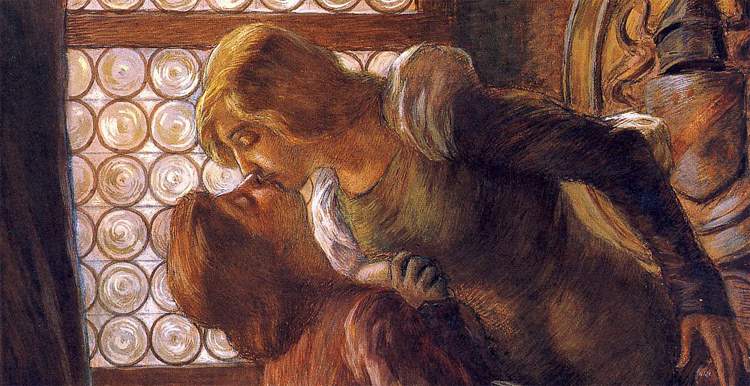 |
| From the romanticism of Hayez to the pointillism of Segantini and Previati, the great Lombard 19th century is on display in Lecco |
Warning: the translation into English of the original Italian article was created using automatic tools.
We undertake to review all articles, but we do not guarantee the total absence of inaccuracies in the translation due to the program. You can
find the original by clicking on the ITA button. If you find any mistake,please contact us.
